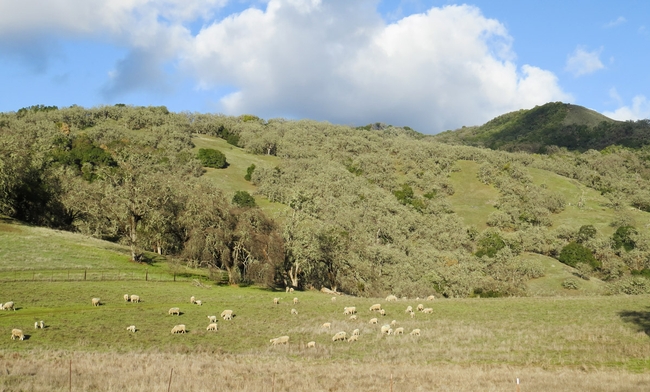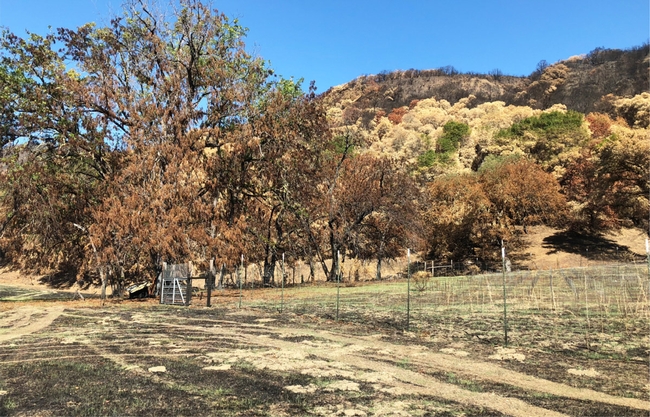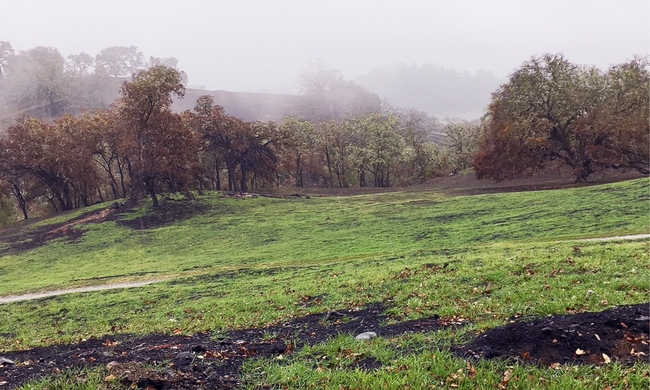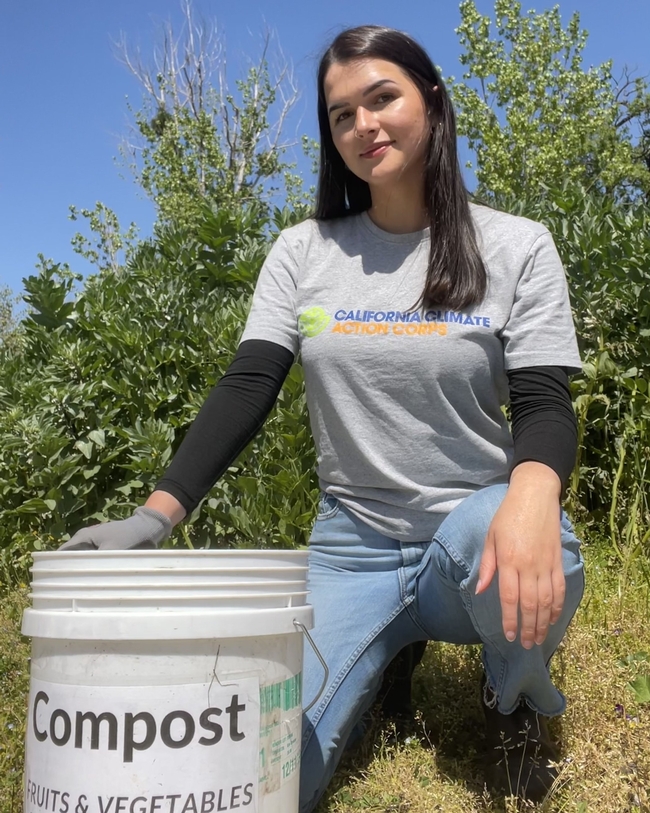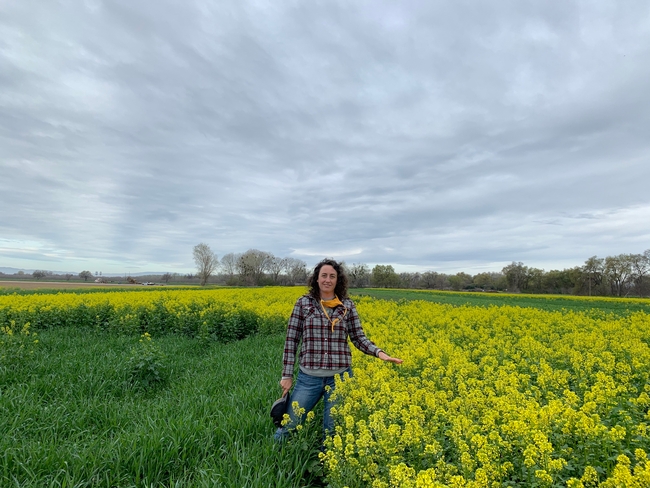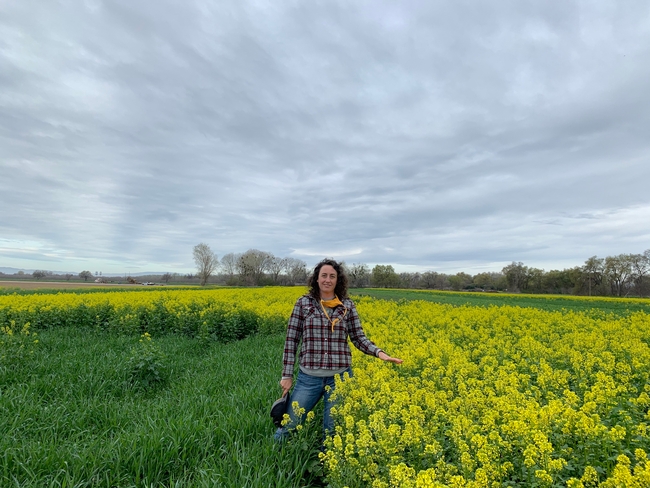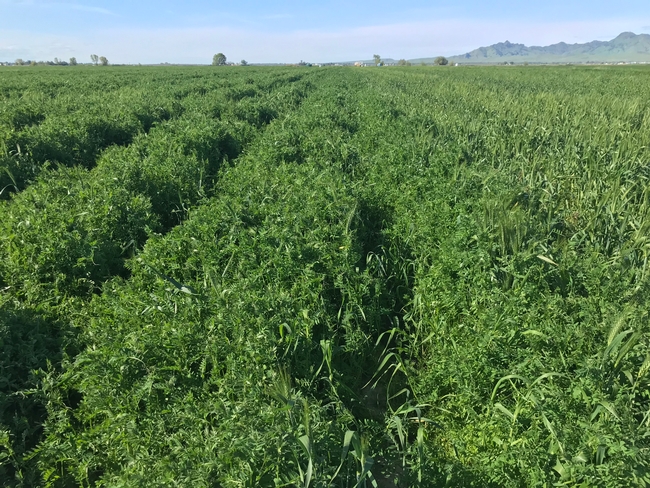Posts Tagged: Sarah
UC ANR adds 9 experts in water, wildfire, pest management and more
To help more Californians address challenging issues, University of California Agriculture and Natural Resources has hired UC Cooperative Extension experts to work in communities stretching from Humboldt and Siskiyou counties in the north, and south to San Diego County. State funding has enabled UC ANR to expand its expertise.
Since 1914, UC Cooperative Extension's researchers have been working directly with community members to improve the lives and livelihoods of Californians.
The nine recently hired UC Cooperative Extension specialists and advisors bring expertise in forestry, pest management, water, plant disease, horticulture, toxicology, economics, rice farming and wildfire.
To see a list of UC Cooperative Extension advisors who have joined in the past few months, visit https://ucanr.edu/About/DirectorySearch/Recent_Hires. The most recently hired scientists are introduced below.
Gill joins UCCE as environmental horticulture advisor
Haramrit Gill joined UC Cooperative Extension on April 1 as an environmental horticulture advisor for Tulare, Kings, Fresno and Madera counties.
She will be identifying landscape plants that are heat-tolerant, disease-resistant and fire-resistant. Gill will be researching California native plants with sustainable attributes that include superior adaptation, biodiversity enhancement, water efficiency and soil health benefits.
A native of Punjab, India, Gill earned her undergraduate degree in agriculture followed by a master's degree in horticulture at Punjab Agricultural University, where her research focused on micropropagation and haploid production in muskmelons. She earned a Ph.D. from the Department of Horticultural Sciences at Texas A&M University.
Her early research investigated the impact of nitrogen on spinach root architecture. Her doctoral work concentrated on rose breeding and deciphering the genetic underpinnings of flower color transition traits, fragrance and dwarfing in roses, with a particular focus on the intriguing phenomenon of flower color transformation from yellow to dark pink as blooms matured. She also collaborated on projects aimed at enhancing heat tolerance and disease resistance in roses.
Gill is based at the UCCE office in Tulare and can be reached at hamgill@ucanr.edu.
Jordan joins UCCE as forestry and natural resources advisor 
Christian Jordan joined UCCE on March 18 as a forestry and natural resources advisor for Shasta, Siskiyou and Trinity counties. He will work to advance forest resilience and sustainable management on private and public lands, with a focus on conifer forest resource management and sustainable natural resources.
In 2020, Jordan completed a Master of Forestry at UC Berkeley, with an emphasis on forest resilience in the context of increasingly severe wildfires. Prior to joining UC ANR, he worked in the private sector in defensible space and home hardening, installing residential exterior sprinkler systems for ember defense.
Jordan brings a diverse educational and work background to the position. In 2014, he earned a bachelor's degree in geography from UC Berkeley, writing a thesis on future climate and viticulture in Napa and Sonoma counties. Upon graduating, he worked in the wine industry before returning to natural resources.
Jordan is based at the UCCE office in Redding and can be reached at cjordan@ucanr.edu.
Pastrana joins UCCE as plant pathology advisor 
Ana Pastrana joined UCCE on Jan. 16 as a plant pathology advisor serving Imperial, Riverside and San Diego counties.
In her role, Pastrana will collaborate with pest control advisers and support growers with disease management. In addition to identifying high priority concerns, she will conduct research and develop educational content that addresses growers needs.
Before moving to Southern California, Pastrana worked as a research scientist on plant pathology at the University of Seville, Spain, and at Vineland Research and Innovation Center in Canada. Previously, she completed a postdoctoral assignment in the Department of Plant Pathology at UC Davis in the Thomas Gordon Lab, where she specialized in soilborne diseases affecting strawberries and blackberries.
While attending the University of Seville, Pastrana earned master's and bachelor's degrees in biology. At Investigación y Formación Agraria, Pesquera, Alimentaria y de la Producción Ecológica, a government institution in Spain, she earned a Ph.D. and completed her dissertation on strawberry diseases.
“At that time, Europe banned methyl bromide and other soil disinfectants. Strawberries rely on these disinfectants so plenty of soilborne diseases emerged,” Pastrana said.
Originally from Seville, Spain, Pastrana said that her small hometown is surrounded by plum and citrus trees. Her mother, like many others, worked in the agricultural industry and Pastrana wondered how plant life works, inspiring her to study biology.
As a Ph.D. student, Pastrana didn't know she would pursue plant pathology specifically because she was open to studying diseases in general whether it be humans, animals or plants.
“Plant pathologists are like doctors. Not everyone is happy to work with us because it usually means that there is some sickness involved,” said Pastrana. “But if growers work with pathologists from the beginning, we can focus on preventative care and helping to protect plants from getting sick.”
Pastrana is based at the UCCE office in Holtville and can be reached at ampastranaleon@ucanr.edu.
Mokwunye named area IPM entomology advisor 
Idongesit Mokwunye joined UCCE on Jan. 3 as an area integrated pest management entomology advisor.
She will be studying insect pests of economic importance affecting tree fruit and nut crops, such as pistachio, almond, walnut, table grapes and stone fruit. Major pests include navel orangeworm, mealybug, carpophilus beetle, mites and scale insects.
Prior to joining UC ANR, Mokwunye worked as a nut crop entomologist at the Cocoa Research Institute of Nigeria for over 15 years and headed its Crop Protection Division.
“My journey into entomology as a career started when I was posted to the Cocoa Research Institute of Nigeria for the mandatory one-year National Youth Service Corp,” Mokwunye said.
“I was really fascinated at the diversity and economic importance of the insect species (both beneficial and pests) on agricultural crops and natural landscapes generally,” she said. “The hands-on lab experiments and field activities were exciting, engaging and inspiring. I was actively involved in setting up experiments, data collection, data entry and informal discussions on research projects. I was seeing the insect world in an entirely different perspective.”
She already held a bachelor's degree in zoology from the University of Lagos, Nigeria.
“The then-head of the department observed my interest and encouraged me to get a master's degree,” said Mokwunye, who then earned a master's degree in entomology from the University of Ibadan, Nigeria. “During the course of the second degree, I got a job in the same institute and today the rest is history.”
Mokwunye holds a Ph.D. in entomology from the Federal University of Agriculture Abeokuta, Nigeria. Her research interests include integrated pest management, chemical ecology, extension entomology and economic entomology. She has worked on the population dynamics of the cashew stem girdler as it correlates with weather parameters, its damage potential, semiochemical interactions and chemical control of insect pests.
She has served as a resource person engaging stakeholders in outreach activities and facilitating training programs on good agricultural practices. In addition to publishing more than 25 research articles, she is a fellow of African Women in Agricultural Research and Development, Orange Knowledge Program of the Netherlands Government, and Scientific Exchanges Program of the USDA.
“I am delighted to be here as a UC Cooperative Extension advisor and I hope to bring my expertise and experience in pest management to bear,” she said. “I plan to connect and engage meaningfully with my clientele in order to understand their needs, priorities and perspectives regarding pest management issues.”
Mokwunye is based at Kearney Research and Extension Center and can be reached at (559) 807-0257 and imokwunye@ucanr.edu.
UCCE water advisor Garza hopes to foster ‘spirit of shared responsibility' 
Laura Elisa Garza Díaz joined UC ANR on Jan. 3 as the UC Cooperative Extension water quality, quantity and climate change advisor for Lake and Mendocino counties, focusing on how intensified droughts, floods, wildfires and other climate impacts affect water supply and quality.
She aims to address Sustainable Groundwater Management Act requirements and enhance local water resilience in collaboration with farmers and natural resource managers, local government water agencies, water districts and other key stakeholders.
In addition to guiding policymakers in creating comprehensive water-resiliency plans covering development, storage, alternative sources and conservation, Garza – who is fluent in Spanish – will share water research with a diverse range of communities.
“I aim to empower local stakeholders by providing them with the knowledge and tools needed to navigate the complex landscape of water quality, quantity and climate change,” she explained. “My goal is to foster a spirit of shared water responsibility, and ensure that water management practices consider the needs of all – for a more just and inclusive environment for everyone.”
Originally from Monterrey, Mexico (“the city of the mountains,” as she puts it), Garza earned her bachelor's degree from Tecnológico de Monterrey. After completing an Erasmus Mundus joint master's degree program in applied ecology, Garza worked as a specialist with the Water Center for Latin America and the Caribbean.
While pursuing her Ph.D. at UC Davis, she served as a scientific advisor for Pronatura Noroeste, an environmental protection organization, and started the Women in Science Interview Sessions at the Permanent Forum of Binational Waters, where she volunteered. It is an initiative to interview women who have worked or researched water topics in the Rio Grande/Rio Bravo Basin.
After obtaining her Ph.D. in hydrologic sciences from UC Davis, Garza worked as a project manager for the Washington Water Trust in Washington.
At every step of her journey, Garza has been motivated by a deep passion for safeguarding water resources and fostering resilient ecosystems and communities.
“I find inspiration in the intersection of science, community engagement and sustainable water management,” she said. “The opportunity to contribute to the well-being of local communities and the environment drives my commitment to addressing water challenges in a changing climate.”
Based at the UCCE office in Ukiah, Garza can be reached at legarza@ucanr.edu and (707) 463-4495.
Agyeman joins UCCE as economics advisor for Butte, Glenn and Tehama counties 
Domena Agyeman joined UCCE Jan. 3 as an agriculture and natural resources economics advisor for Butte, Glenn and Tehama counties.
Prior to joining UC ANR, he was a postdoctoral associate at the Virginia Seafood Agricultural Research and Extension Center at Virginia Tech University.
As a UCCE advisor, Agyeman will provide insights that ensure economic profitability of all agriculture activities, including orchards, rice, forestry and other natural resources-based businesses in those counties. He will also promote broadband access and contribute to regional economic development.
“I am excited to leverage my expertise to highlight the economic contributions and impacts of the agriculture and natural resources industries in Butte, Glenn and Tehama counties,” Agyeman said, “and to provide producers and other stakeholders in the region with research-based information that will help them navigate their business challenges and opportunities.”
His research interests encompass natural resources and environmental policy impact assessments, economic contributions and impacts analyses, producer decision-making assessments, and consumer preferences assessments.
“To get started, I will be doing a needs assessment, focus group meetings and surveys of target groups,” he said.
Agyeman earned a Ph.D. in agricultural economics from the University of Kentucky, a master's degree in agricultural economics from Mississippi State University and bachelor's degree in agricultural science from University of Cape Coast in Ghana.
Agyeman is based at the UCCE office in Oroville and can be reached at dagyeman@ucanr.edu.
Marsh named rice advisor for Colusa and Yolo counties 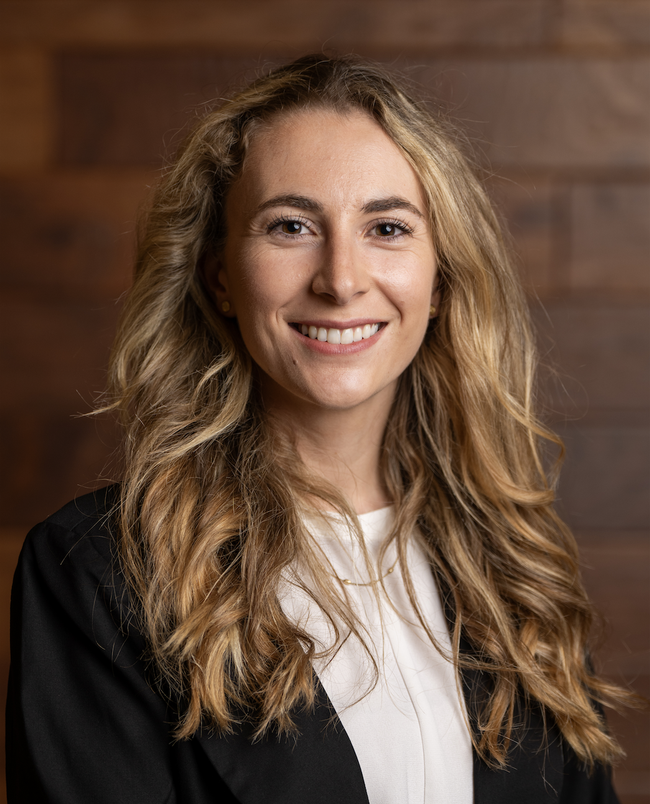
Sarah Marsh joined UCCE on Jan. 3 as a rice farming systems advisor serving Colusa and Yolo counties.
Prior to joining UCCE, she worked in rice breeding research and integrative pest management with several row crops in the Upper Gulf Coast region.
She earned a master's degree in horticulture and agronomy at UC Davis, where she worked with Kassim Al-Khatib, professor of plant sciences, studying weeds and herbicide resistance in rice agroecosystems. She holds a bachelor's degree in plant and environmental soil science from Texas A&M University.
“I grew up on a diversified row-crop and orchard farm in Arbuckle and am grateful for the opportunity to serve the community in which I was raised,” Marsh said. “I hope to spend the first few months getting to know the growers and community of this region and learning what the unique needs of our area are.”
Marsh is based at the UCCE office in Colusa and can be reached at smarsh@ucanr.edu and (530) 415-7052.
Woelfle-Hazard joins UCCE Humboldt-Del Norte as fire advisor 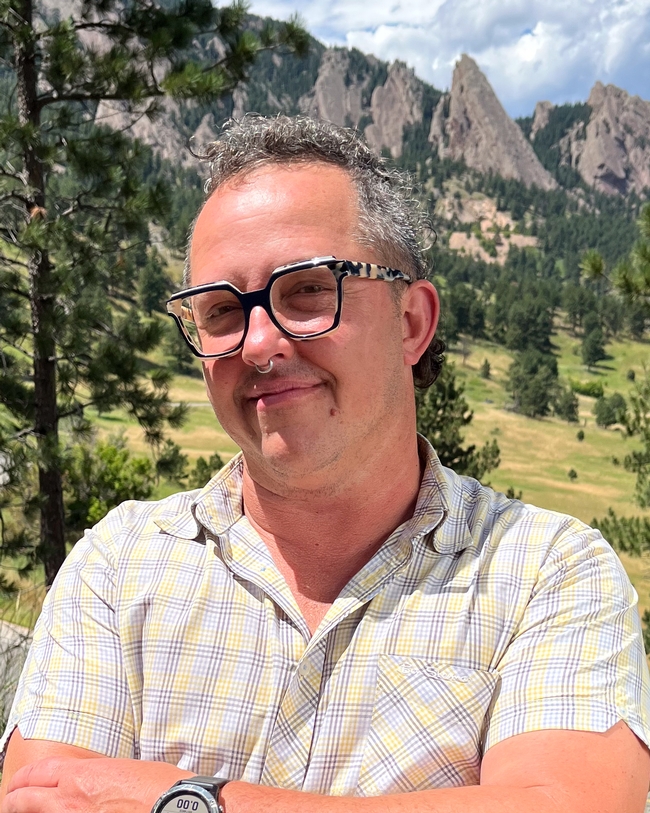
Cleo Woelfle-Hazard joined UCCE on Jan. 3 as a fire advisor for Humboldt and Del Norte counties. He will support residents, landowners, planners, land managers, tribes and Native fire practitioners in making North Coast communities more resilient in the face of intensifying wildfires.
His research and extension programs focus on climate resilience, cultural burning, fire-water interactions and training a diverse fire workforce.
Woelfle-Hazard collaborates on research with Native nations, agencies and local community members. In collaboration with the Karuk Department of Natural Resources, he is exploring future fire scenarios in the Klamath Basin and how streamflow would change. They are also exploring how fire and flooding can be renewed to revitalize habitat for ecocultural species such as willow, grape, salmon, elk and eel.
His past projects have included community-directed river research with frontline communities in Seattle, the Yukon-Kuskokwim Delta and Sonoma County. Using his expertise in home water and wastewater systems, he evaluated health and economic aspects of water delivery in Oakland and Hubli-Dharwad, India.
As a co-investigator on the Humanities Education for Anti-Racism Literacy project, Woelfle-Hazard collaborated on creating pathways to higher education for Native youth, and for training students to engage in respectful collaborations with Native partners.
He earned a master's degree and Ph.D. in energy and resources at UC Berkeley, where he convened scientists and Sonoma County residents to experiment with capturing winter rain to increase summer streamflow to benefit juvenile salmon, and exploring the possibilities of working with beavers to create cool refuges for coho. He also holds a bachelor's degree in interdisciplinary geosciences from the University of Montana.
Woelfle-Hazard is based in Eureka and can be reached at cwhaz@ucanr.edu.
Jegede joins UCCE as agricultural toxicology specialist 
Olukayode “Kayode” Jegede joined UC ANR on Jan. 2 as an assistant professor of Cooperative Extension for agricultural toxicology with the Department of Molecular Biosciences, School of Veterinary Medicine and Department of Environmental Toxicology in the College of Agricultural and Environmental Sciences at UC Davis.
Jegede will be studying contaminants of agricultural importance in California, such as pesticides, metals, microplastics, veterinary pharmaceuticals, PFAS, fertilizers and their effects on humans, animals (including aquaculture) and environmental health of soil and plants.
“I will also be looking at various exposure pathways of these contaminants and interactions through food, water, soil and how climate change or other major environmental change events can influence toxicity of these contaminants and mitigation strategies,” Jegede said. “My research will also have a “one-health” perspective to it.”
Prior to moving to California, Jegede was a postdoctoral research associate at the Department of Soil Science, University of Saskatchewan, Canada for a year before moving to Wageningen University and Research in the Netherlands to work as a research scientist focused on terrestrial ecotoxicology.
His past research has examined the effects of metals, pesticides and mixture toxicity on soil biota (mites, springtails, snails, earthworms) and soil enzymes, related ecosystem service function and generating data for environmental risk assessment of metals and pesticides.
“I look forward to helping solve toxicology issues in California through research, advising on and promoting good health for everyone and everything connected to small and large-scale agriculture in California.” Jegede said.
He earned his Ph.D. in toxicology at the University of Saskatchewan in Canada and bachelor's and master's degree in zoology at the Obafemi Awolowo University in Nigeria.
Jegede is based at UC Davis and can be reached at ojegede@ucdavis.edu.
Lambs grazing on pastures after wildfire show no significant adverse effects
Hopland REC turns 2018 River Fire devastation into research opportunity
The destructiveness of wildfire flames is easy to see, but dangers may lurk in the ashes they leave behind. A group of UC Davis scientists studied lambs at the UC Hopland Research and Extension Center, investigating whether pastures regrown after a wildfire cause toxic metal residues in grazing animals. The results, published in California Agriculture journal, showed that grazing on regrown pastures did not significantly alter the metal content of the lambs' meat and wool. That's good news for ranchers and consumers from a food safety perspective.
In 2018, the River Fire burned six miles north of Hopland, scorching two-thirds of the land at Hopland REC, including areas in its sheep station. Since Hopland REC conducts ecological and agricultural research, they had data and some meat samples from the sheep flock that lived on site before the River Fire occurred.
“A bunch of researchers came together to brainstorm how we could take advantage of this unfortunate event,” said Sarah Depenbrock, assistant professor and agronomist in the Medicine and Epidemiology department of UC Davis School of Veterinary Medicine.
Burning has played a role in agricultural processes for many years, but wildfires in California are creating a new fire landscape that interests researchers like Depenbrock. “The problem, now, is that these big wildfires probably interact with agricultural land differently than routine prescribed burns,” she said.
Large, older plants on lands that have not recently burned may contain high concentrations of metals, sequestered over years of growth. Mercury is an example of a potentially dangerous metal that can be sequestered in living things over time. These metals may be distributed in ash after the vegetation burns so the scientists examined lambs that had grazed on Hopland REC's recently burned pastures, during the first plant regrowth.
Uncertain results raise more questions
The researchers compared meat from lambs that grazed on regrown pastures in 2019, after the River Fire, to frozen meat samples that were collected the year before the fire. Lead, mercury, arsenic, molybdenum, cadmium, beryllium, cobalt and nickel were not detected in any animal samples. There were, however, a few (3 out of 26) samples that tested positive for the non-essential (potentially toxic heavy metals) chromium and thallium in the group grazing after the fire.
Due to the small number of samples testing positive, researchers could not determine statistically if this contamination was associated with grazing the burn regrowth. The concentrations of chromium and thallium found may or may not be potentially toxic, depending on the specific forms and how much meat a person consumes.
Another aspect of the study included testing lambs' wool to determine if it is a good method of judging the mineral content of its meat. “In general, we learned that it wasn't well-correlated with most meat metal content of interest, which is worth knowing. However, because we did not identify many of the non-essential metals of particular toxologic concern, such as lead or mercury, in any animal samples we could not determine if testing wool would be useful for those metals, as they are in other species,” said Depenbrock. She also notes that the wool from animals whose meat tested positive for chromium and thallium, did not test positive for these metals in their wool.
As the challenges in managing wildfires persist, so does the risk of contamination of food products stemming from grazing livestock.
“We didn't get striking evidence that tells us, when there's a fire, it means everything is contaminated with heavy metals,” said Depenbrock. “But it does raise the question that maybe we should be doing a little bit of surveillance to see if this is spurious or common. And we should be finding a way to screen grazing herds.”
Recommendations to manage copper concerns
“It's a very small study, but it was quite interesting to find that copper was actually lower in the postfire grazing group, which makes me wonder,” Depenbrock said.
Diseases associated with copper deficiency are a major concern in sheep. For example, congenital swayback can result in stillbirth or an animal's inability to stand on its own due to incurable changes to the spinal cord. Other adverse effects include reduced growth rate, anemia, wool defects and fiber depigmentation, and osteoporosis with higher risk of spontaneous fractures. Copper excess can also cause serious and sometimes fatal disease.
Many of the forage sources, grazing areas and rangelands in California are copper deficient, while some feed sources have excess copper. Screening and monitoring livestock herds for trace minerals including copper is crucial.
To test for copper, she advises livestock owners to obtain mineral concentrations from the organs of euthanized or dead animals. Samples from the liver and kidney are the most valuable organs to identify a potential problem in the herd. UC Davis Veterinary Medicine's California Animal Health and Food Safety (CAHFS) labs do this testing routinely.
Second, monitor and record mineral supplementation and, third, maintain updated health records to make informed decisions regarding supplementation based on a herd or flock's known problems. For example, if a producer is not accustomed to supplementing copper, Depenbrock highly recommends working with a veterinarian to start out (as there are numerous copper supplement products of varying concentration on the market), to determine a testing or screening plan, and review health records for problems potentially associated with copper.
To read the full text of the study, visit https://calag.ucanr.edu/Archive/?article=ca.2022a0016.
UC Climate Steward: ‘It’s the most fulfilling work’
Climate Stewards course instructor inspires change in Butte County
Growing up in Butte County, Rose Brazil-Few has watched climate change devastate communities and ecosystems in the form of severe drought and deadly wildfire, including the 2018 Camp Fire that swept through Paradise. Through the University of California Climate Stewards program, Brazil-Few is taking action in her home county – and inspiring others to help.
“Seeing the environmental situation firsthand in California, every day I find a reason to work on climate action projects,” she explained. “It's the most fulfilling work that I could possibly be doing right now.”
As a California Climate Action Corps Fellow (a workforce development program affiliated with California Volunteers), Brazil-Few is working at the Butte Environmental Council as community sustainability coordinator. She said the UC Climate Stewards course she completed last fall – administered by the UC California Naturalist program – taught her crucial lessons she applies every day, especially on framing and conveying the climate crisis.
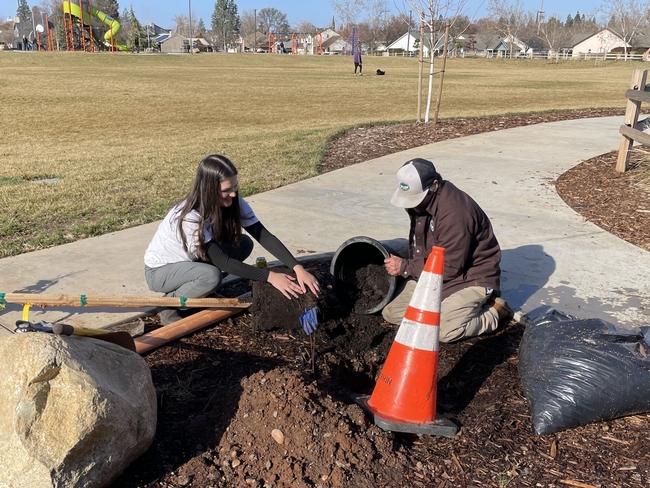
“One of the biggest takeaways is how to communicate about climate change while we're doing climate action work,” she said. “Sometimes you encounter community members who don't necessarily like the term ‘climate change,' but they still believe in cleaning up parks and planting trees for shade – so focusing on positive action will still accomplish your bigger goals.”
Brazil-Few will further amplify those locally rooted solutions and climate stewardship opportunities when she starts teaching her own UC Climate Stewards course this summer, through Butte Environmental Council.
“Rose is the first CCAC fellow to become a certified Climate Stewards course instructor as part of the Pathway to Leadership we co-developed with CCAC,” said Sarah-Mae Nelson, UC Climate Stewards academic coordinator. “This pathway is an opportunity for fellows to continue fostering community and ecosystem resilience in their communities as active Climate Stewards, once their official fellowship has ended.”
Since launching in fall 2020, nearly 500 people have completed the UC Climate Stewards course, which is delivered by 17 partner organizations throughout the state. Nelson noted that, in addition to the CCAC collaboration, UC Climate Stewards is also working with Sustainability Service Corps and SEI (Strategic Energy Innovations) Climate Corps – and looking into bringing the course to other states.
A 2021 graduate of Humboldt State University with a bachelor's degree in environmental studies, Brazil-Few said she appreciates that the UC Climate Stewards course instills a sense of hope and empowerment and possibility.
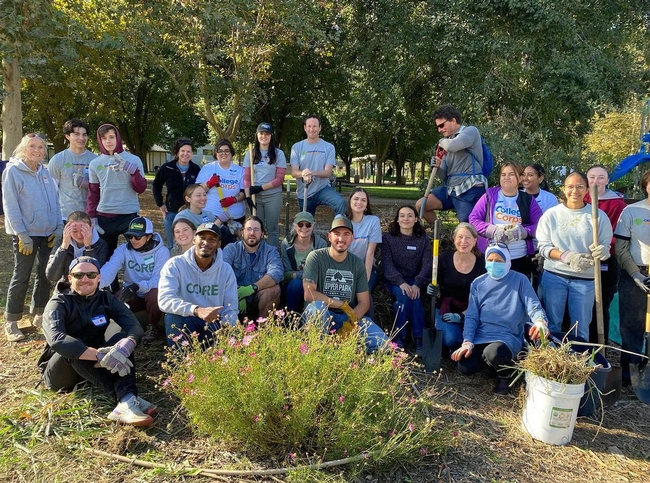
“I know some people who feel hopeless because there's such a focus on the doom of climate change – when in reality you can find so many programs and people in your local community making positive change,” she said.
In her community, Brazil-Few highlights the partnership efforts between the Butte County Local Food Network and area growers, the Traditional Ecological Knowledge sharing at Verbena Fields in Chico, and the continued growth of the community composting program – among many other projects.
They all illustrate a key point that Brazil-Few will emphasize as she designs her UC Climate Stewards course: a meaningful climate project need not take place at a large scale – action can happen, literally, in one's own backyard.
“It can be easily attainable and accessible,” she said. “And just talking about it with people and getting your community excited is the very first step in creating a series of events that eventually leads to a bigger impact on climate change and positive environmentalism.”
New UC study helps growers estimate cover crop costs and potential benefits
Cover crops offer many potential benefits – including improving soil health – but not knowing the costs can be a barrier for growers who want to try this practice. To help growers calculate costs per acre, a new study on the costs and potential benefits of adding a winter cover crop in an annual rotation has been released by UC Agriculture and Natural Resources, UC Cooperative Extension and the UC Davis Department of Agricultural and Resource Economics.
Led by UC Cooperative Extension farm advisors Sarah Light and Margaret Lloyd, the cost study is modeled for a vegetable-field crop rotation planted on 60-inch beds in the lower Sacramento Valley of California. Depending on the operation, this rotation may include processing tomatoes, corn, sunflower, cotton, sorghum and dry beans, as well as other summer annual crops.
“This cost study can be used by growers who want to begin cover cropping to determine the potential costs per acre associated with this soil-health practice,” said Light, a study co-author and UC Cooperative Extension agronomy advisor for Sutter, Yuba and Colusa counties.
“Based on interviews with growers who currently cover crop on their farms, this cost study models a management scenario that is common for the Sacramento Valley. In addition, growers who want to use cover crops can gain insight as to what standard field management practices will be from planting to termination.”
At the hypothetical farm, the cover crop is seeded into dry soil using a grain drill, then dependent on rainfall for germination and growth.
“Given the frequency of drier winters, we included the cost to irrigate one out of three years,” said Lloyd.
A mix of 30% bell bean, 30% field pea, 20% vetch and 20% oats is sown in the fall. Depending on winter rainfall, soil moisture and the following cash crop, the cover crop is terminated in mid to late spring. The cover crop is flail mowed and disced to incorporate the residue into the soil.
The study includes detailed information on the potential benefits and the drawbacks of cover cropping.
Another consideration for growers is that multiple programs such as CDFA's Healthy Soils Program, various USDA-funded programs (EQUIP, the Climate-Smart Commodities, etc.), and Seeds for Bees by Project Apis m. offer financial incentives for growers to implement conservation practices, such as cover crops.
“This study can provide growers with a baseline to estimate their own costs of using winter cover crops as a practice. This can be useful to calculate more precise estimates when applying for some of these programs and/or weigh the costs per acre with expected benefits in terms of soil health, crop insurance premium discounts or other benefits provided by the cover crops,” said Brittney Goodrich, UC Cooperative Extension agricultural and resource economics specialist and study co-author.
“Last year, the USDA's Pandemic Cover Crop Program gave up to a $5/acre discount on crop insurance premiums for growers who planted a cover crop, and there is potential this will get extended going forward,” Goodrich said.
A list of links to resources that focus specifically on cover crops is included in the study. Five tables show the individual costs of each cultural operation from ground preparation through planting and residue incorporation.
The new study, “2022 - Estimated Costs and Potential Benefits for a Winter Cover Crop in an Annual Crop Rotation - Lower Sacramento Valley,” can be downloaded from the UC Davis Department of Agricultural and Resource Economics website at coststudies.ucdavis.edu. Sample cost of production studies for many other commodities are also available on the website.
This cost and returns study is funded by the UC Davis Department of Agricultural and Resource Economics.
For an explanation of calculations used in the study, refer to the section titled “Assumptions.” For more information, contact Don Stewart in the Department of Agricultural and Resource Economics at destewart@ucdavis.edu, Light at selight@ucanr.edu, or Lloyd at mglloyd@ucanr.edu.
Farmers invited to tour cover crops in Sacramento Valley March 3
Farmers and ranchers are invited on a tour to learn how to use cover crops to build soil health. A full-day tour of several cover crop sites in orchards and annual crop fields in the Sacramento Valley is being offered on March 3 by the Western Cover Crop Council's Southwest Region Committee.
“The goal of this tour is to demonstrate ways to use cover crops effectively in annual crops and orchards in the Sacramento Valley,” said tour organizer Sarah Light, UC Cooperative Extension agronomy advisor.
“This tour will cover a range of topics, including cover crop selection, equipment needed to manage cover crops, considerations for cover cropping in the region, and the importance of building soil health,” said Light, who is also chair of the Western Cover Crop Council's Southwest Region Committee and a board member of the Western Cover Crop Council.
Cover crop species, cultivars and mixes including legumes, grasses and brassicas will be showcased in Colusa County, with farmers, UC Cooperative Extension specialists and researchers giving presentations.
The tour bus will depart from the Colusa County Cooperative Extension Office at 100 Sunrise Blvd., Suite E, Colusa, CA 95932 at 8 a.m. and return at 7:30 p.m.
Participants are currently limited to 50 farmers and ranchers. If space is available after Feb. 1, others may join. ?The $50 registration fee includes morning refreshments, transportation, lunch and dinner. To register or to see the agenda, visit https://surveys.ucanr.edu/survey.cfm?surveynumber=36190.
